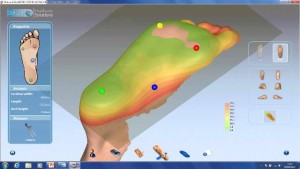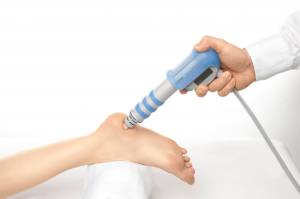Plantar fasciitis can be extremely debilitating if allowed to persist. As with most conditions, early treatment can prevent the injury progressing from an acute stage to the chronic point where pain relief, walking and normal everyday activities become much more difficult. Plantar fasciosis is another term used to describe this debilitating pain. A heel spur may even be present in conjunction with this type of plantar heel pain.
At Podiatry Care, our Podiatrists have spent almost 40 years developing a best practice approach to dealing with plantar fasciitis, plantar fasciosis and related heel pain, heel spur and aching feet issues. We now have a standard approach to this foot pain issue which gives you the best possible chance of avoiding any serious surgical treatment.
5 quick tips to relieve plantar fasciitis:
-
- Find a Podiatrist or Podiatry Group who treat thousands of cases of plantar fasciitis and heel pain each year. Dentists treat teeth, electricians deal with electrical work and Podiatrists specialise in the treatment of feet. Sounds obvious yet so many people visit a Podiatrist only after seeing their General Practitioner or Physiotherapist. I have an excellent Physiotherapist and Chiropractor that both provide excellent care and advice when my spine needs help but, I won’t be calling either of them to check my teeth. Podiatry Care Podiatrists specialise in the treatment of plantar fasciitis and foot pain.
- Taping and strapping can be very helpful in providing initial relief with severe heel pain, heel spurs, plantar fasciitis and plantar fasciosis. Your Podiatrist can help you with advice on helpful strapping. This is usually a short term treatment option and often used as a diagnostic aid.
- Stretching and strengthening exercises can help with plantar fascitis, however certain exercises at the wrong time can make the condition worse. Ask your Podiatrist about the correct exercises and, more importantly, exactly when the exercises should be performed.
- Correct footwear is crucial. As with most foot problems, the right balance between support and cushioning is essential with plantar fasciitis treatment. The right shoes and orthotic support can be helpful and may be needed to unload the damaging forces on the plantar fascia and the bottom of the heel. Podiatry Care use the latest 3D laser scanning systems following a biomechanical assessment to ensure the most accurate orthotic insert is achieved. Your Podiatrist will assess your footwear and advise you on exactly what is suitable.

- Finally, Podiatry Care have been using extracorporeal shock wave therapy ( ESWT ) when administering chronic plantar fasciitis treatment and obtained international accreditation to do so in November 2011. Podiatry Care were the pioneers with the introduction of ESWT into our South Australian Podiatry clinics. Fortunately, not everyone needs shock wave therapy but if you do, Podiatry Care’s experience is second to none.
- Find a Podiatrist or Podiatry Group who treat thousands of cases of plantar fasciitis and heel pain each year. Dentists treat teeth, electricians deal with electrical work and Podiatrists specialise in the treatment of feet. Sounds obvious yet so many people visit a Podiatrist only after seeing their General Practitioner or Physiotherapist. I have an excellent Physiotherapist and Chiropractor that both provide excellent care and advice when my spine needs help but, I won’t be calling either of them to check my teeth. Podiatry Care Podiatrists specialise in the treatment of plantar fasciitis and foot pain.

If plantar fasciitis is an issue – see the experts at Podiatry Care. Contact Podiatry Care or book online for appointment.


